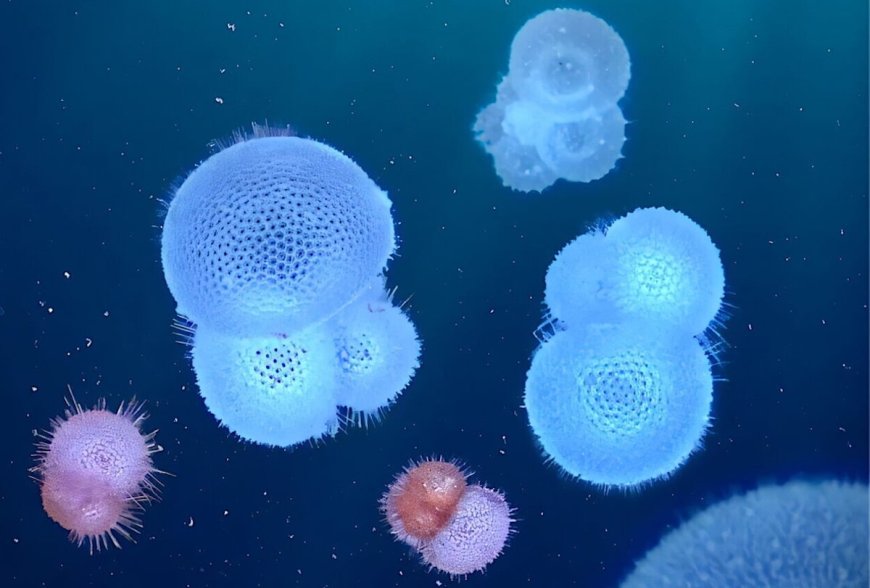‘These Organisms Are Like Sentinels’: Changing Oceans Threaten Plankton Species
According to a new study, some plankton species may face changing environmental conditions by 2100 that could impact marine ecosystems and the ocean’s capacity for storing carbon. Planktonic foraminifera — single-celled organisms who live in seawater — are under threat from warming oceans, a press release from the Max Planck Society said. In tropical regions, […] The post ‘These Organisms Are Like Sentinels’: Changing Oceans Threaten Plankton Species appeared first on EcoWatch.

According to a new study, some plankton species may face changing environmental conditions by 2100 that could impact marine ecosystems and the ocean’s capacity for storing carbon.
Planktonic foraminifera — single-celled organisms who live in seawater — are under threat from warming oceans, a press release from the Max Planck Society said. In tropical regions, the unprecedented conditions could lead to more extinctions.
“Our data shows that planktonic foraminifera, which play a crucial role in the ocean’s carbon cycle, are struggling to survive in a rapidly changing climate. These organisms are like sentinels, warning us of the drastic effects that warming and acidification have on marine ecosystems,” said lead author of the study Sonia Chaabane, a researcher at the Max Planck Institute for Chemistry and the European Centre for Research and Teaching in Environmental Geosciences (CEREGE), in the press release.
The international team of researchers from Germany, France, Japan, Spain and the Netherlands analyzed almost 200,000 datasets going back to 1910 to find out how planktic foraminifers responded to climate change.
The researchers found that many species of foraminifera are migrating toward the poles at rates as high as 10 kilometers a year to escape rising sea surface temperatures. The data also showed that some species are migrating deeper into the ocean in search of cooler waters.
Even with these adjustments, foraminifera populations have shrunk by a quarter in the past eight decades. Tropical species have been the most impacted due to their reproductive cycles being disrupted by the extreme warming in these regions.
Rising carbon dioxide levels in the ocean, coupled with ocean acidification, lower calcium carbonate formation. Foraminifera use calcium carbonate to build their shells. When plankton die, their empty shells sink to the seafloor, so less shell production means less carbon storage.
“Rising carbon dioxide emissions are provoking ocean warming and acidification, altering plankton habitats and threatening calcifying organisms, such as the planktonic foraminifera (PF). Whether the PF can cope with these unprecedented rates of environmental change, through lateral migrations and vertical displacements, is unresolved,” the authors of the study wrote.
Bioindicators such as foraminifera, rather than individual measurements, are likely to provide a better understanding of the complex interactions between ecosystems and climate, the press release said.
“In view of advancing climate change, researchers are faced with the question of adaptation strategies individual species of planktonic foraminifera will develop in the near future,” said Ralf Schiebel, head of micropaleontology group at the Max Planck Institute for Chemistry, in the press release.
The study, “Migrating is not enough for modern planktonic foraminifera in a changing ocean,” was published in the journal Nature.
“Our insights into the adaptation of foraminifera during the Anthropocene suggest that migration will not be enough to ensure survival. This underscores the urgent need for us to understand how the interplay of climate change, ocean acidification and other stressors will impact the survivability of large parts of the marine realm,” the scientists wrote in the study.
The post ‘These Organisms Are Like Sentinels’: Changing Oceans Threaten Plankton Species appeared first on EcoWatch.
What's Your Reaction?








































